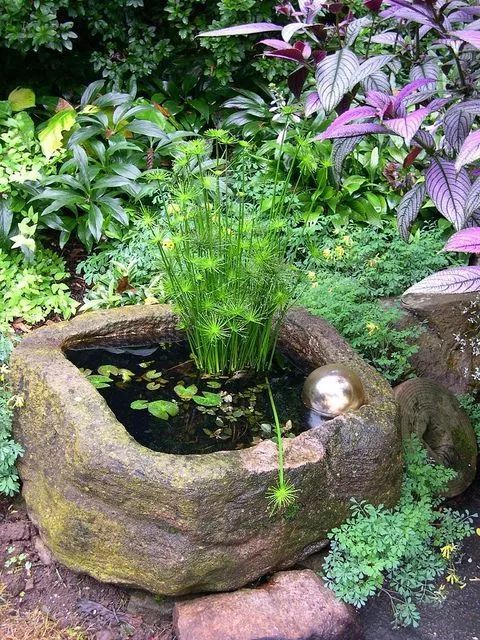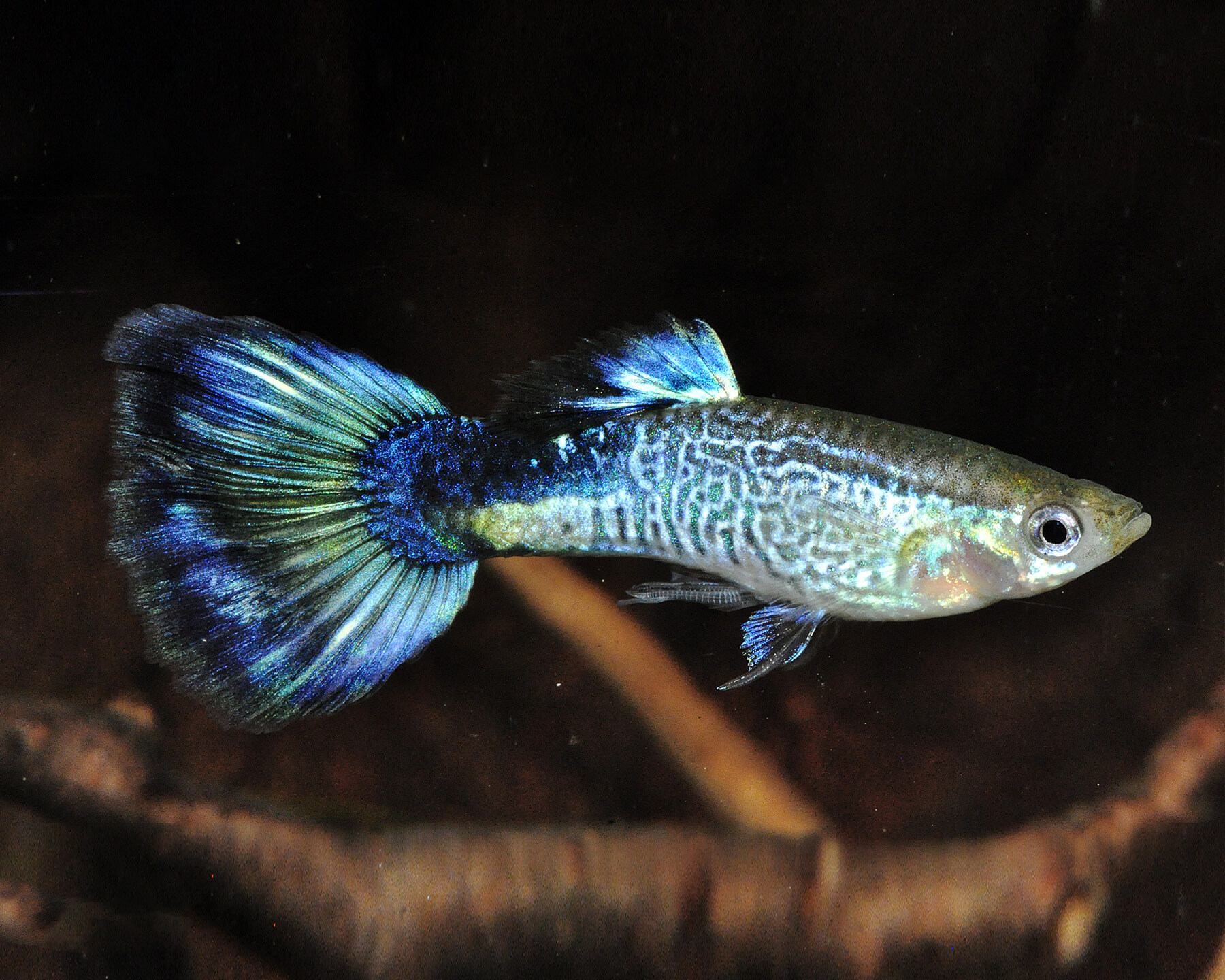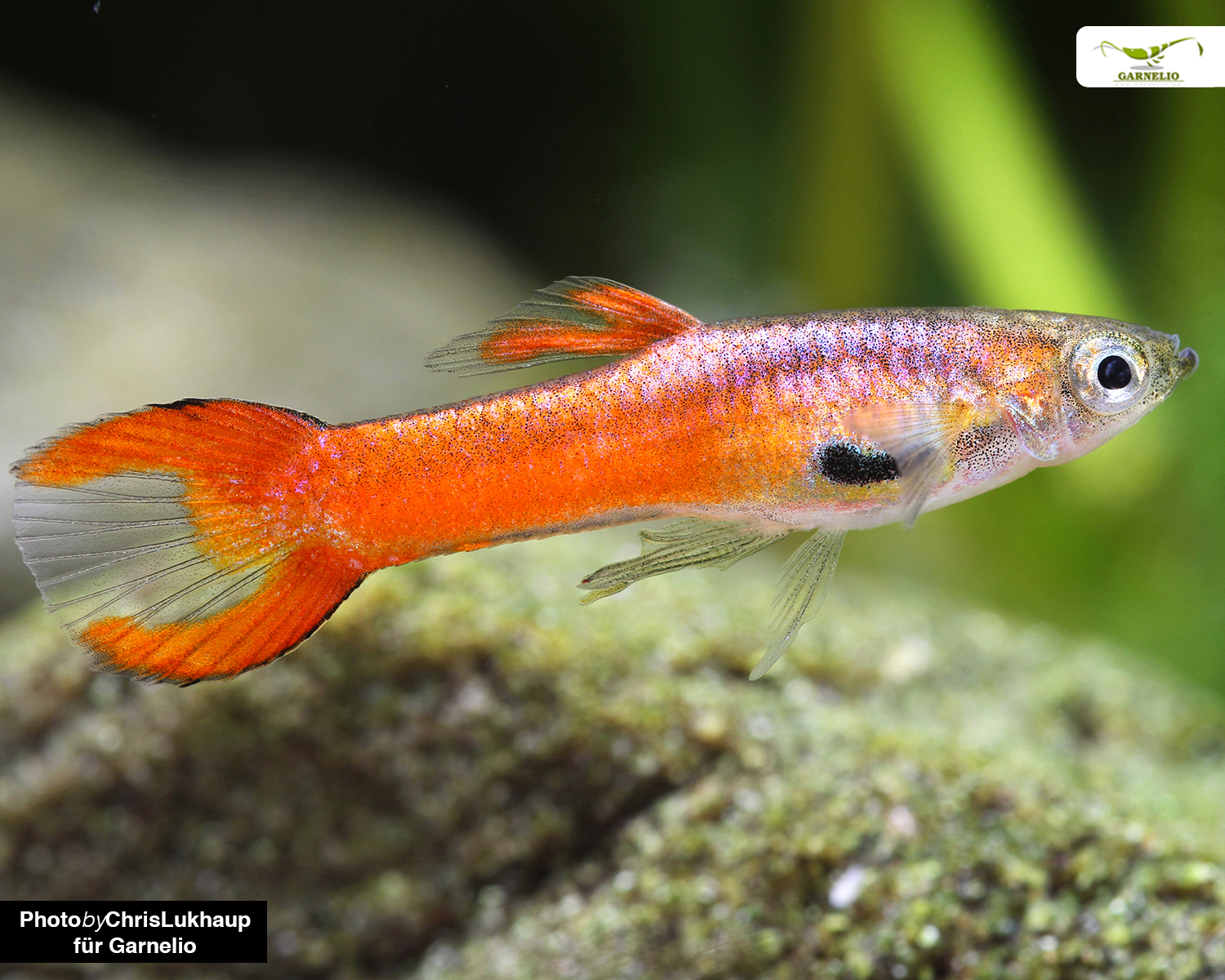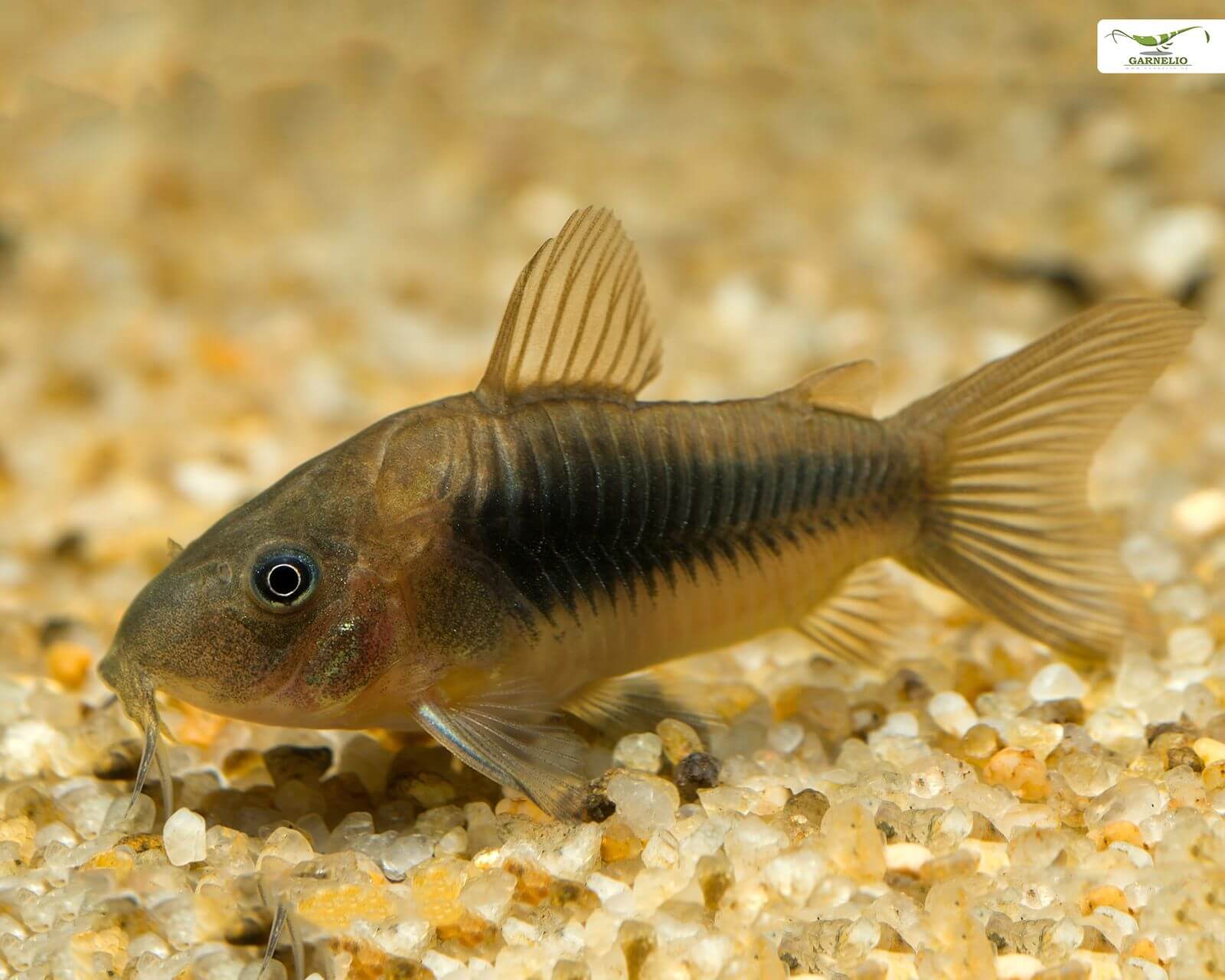Aquarium fish in mini pond
From the tub to the wine barrel
There is always room everywhere, if you look carefully. If you pay attention to a few little things, nothing stands in the way of the project mini pond. Even if the name "mini pond" sounds a bit like minimalism, it should not be ignored that fish have at least 54 liters of water volume available as a lower limit, so that they can be kept species-appropriate. Mostly, however, mini ponds, in which later fish cavort, have rather more than 100 liters. For this purpose, concrete rings lined with pond liner are suitable, but also mortar tubs, which are already available in various sizes in hardware stores. Even from a sorted out bath tub can be tinkered with some skill a great fish domicile. For these ponds you can often find a place to put them.
But before it goes to set up, the vessel should first be thoroughly cleaned and washed out, so that no adhesions or old residues can loosen. When using old wine barrels, it is helpful to completely pre-water them for a few days so that it will seal tightly later. You can also line it with pond liner to prevent water loss or carryover of wine residue. While mortar tubs are convenient to handle and maintain later, they may become "bulbous" when filled. To prevent this, the tub can be fixed with tension straps or with a stable frame construction made of wood. Zinc tubs should be approached with some caution and the tub should be prophylactically lined with pond liner, as these can often still release zinc residues into the water. So that black barrels or tubs are not heated up too much, it makes sense to cover them with bamboo or reed mats, but also with lighter-colored wood.
Who wants to overwinter the mini pond completely, for example, in the garage, should think about mounting rollers or rolling boards before filling. If the mini pond is to stand immobile, it makes sense to place a thick polystyrene board underneath so that the pond does not get too much cold from below. Since it has only a very small water volume (compared to large garden ponds) it should rather not be buried, because the temperatures in a soil depth of 30-50 centimeters can still be very fresh, even if the air temperature already seems pleasant. The pond could cool down too much overnight, endangering the animals.

Aquarium bases in green
In principle, the same rules apply to the new mini-high pond as to the aquarium in the living room. The difference, however, is the view and the location. The mini pond should also not stand in the blazing sun and runs much better if it gets a shadier and above all rather quiet location. Visually, the mini pond looks from above rather than from the front. Nevertheless, it can be set up more or less the same way as an aquarium, starting with the substrate , various stones, branches and roots, which come into their own especially well when they protrude above the water surface and are planted.
In this way, a tasteful eye-catcher can be conjured up on the terrace. Paving stones can also be used to create steps in the mini pond, which in turn can be equipped with small plant baskets. Since 98% of all aquarium plants grow both submerged and emersed, you can create a great overwater jungle in this way. In addition, fish love to use these hiding places, so you can observe them even better when they are cavorting on one of the upper steps. Pond plants can also be integrated into the mini pond in this way, with special plant baskets to hang in, a great marsh zone and green pond border can be created. With floating plants can also be generated great shaded areas, in addition, these keep the algae population in check. Last but not least, the water in the mini pond should also be treated and oxygenated. Especially when temperatures rise in the summer, the oxygen content in the water also drops, so a Filter Oxygenation system should be mandatory. If the temperatures rise too much, you can also use a Oxydator can also be used, or outflow stones. Also the weekly water change should, just as in the aquarium, not come too short. However, before the living room aquarium inhabitants can be added, the mini pond should be properly run in and not be stocked until the water values have been adjusted to the needs of the future inhabitants and nitrite can no longer be detected. For this purpose the water should be measured regularly with a water test, with a Bacteria starter like for example our Crusta Bacter Liquid you can also support the run-in phase very well. It is also helpful to inoculate with a filter sponge from the already running aquarium. Also the continuous temperature measurement should not be left out of sight. Mid-May is an optimal time to start the outdoor aquarium project.

Who can go outside?
The new outdoor aquarium can of course be stocked wonderfully with biotope fish such as minnows, Moderlieschen, sticklebacks or bitterlings, but just as well with some aquarium fish, which in some places can even develop a better condition, reproduction rate and colors if they have spent the summer outside. Only when the outside temperatures ensure that the mini pond does not cool down too much at night may the scaled family members go outside, but again, get them well acclimated so they don't get a temperature shock. It is best to measure the pond temperature in the morning, if it is above 18 ° C, the fish can move. Here we present suitable candidates:

Livebearers
Guppy, Platies but also Swordtails are quite tolerant and flexible regarding their needs and demands on water values. They can easily spend the summer in the mini pond and reproduce here quite well. Especially in fine plants at the edge of the pond you can find new young animals more often. However, the adults chase after their offspring, which is why an overpopulation is probably rather limited, especially if feeding is sparse. These group fish are easy to handle and are great to watch during the day, as they are actually constantly on the move. Above all, they also pluck algae and help a bit to keep the mini pond clean. They can also be socialized with tetras, danios or catfish.
Labyrinth fish
Whether Gourami, Macropods or Fighting fish- these Asians are kept outside practically all year round in their countries of origin and are also propagated. Although the Central European summer is not suitable for this throughout the year, but from the end of May to September, these great comrades can certainly go out into the fresh air. However, labyrinth fish are character animals, the fighting fish, for example, should be kept individually. Likewise, labyrinth fish should not be socialized with other labyrinths or large-finned fellow fish such as guppies or veiltails. However, a pair of gourami could be well maintained with other small tetras or danios if the mini pond is set up so that the animals can claim their own territory. Brown autumn leaves, peat, alder cones or even almond leaves are very suitable for the animals in the mini pond, which may also be densely weeded in places or darkened with floating plants.
Danios
Cardinalfish are quasi "old hands" in aquaristics and are also represented in a light form or as a veiltail variant. They remain with approx. 3.5 cm somewhat smaller and can be maintained and socialized without problems. With their iridescent colors Tanichthys albonubes glitters wonderfully in the mini pond and is a great splash of color. If they find enough fine plants in the mini pond they can also reproduce here. They prefer it a bit cooler and feel most comfortable around 20° C. The Cardinals are peaceful group fish, which can also be socialized with other peaceful companions such as livebearers or tetras.

Barbs
Barbs are quite robust animals, which forgive a faux pas, but this is not a free pass not to keep them according to their needs. Especially the great bright colors of the Barbus conchonius make them unique eye-catchers, in outdoor keeping they become even more intense than in the aquarium. They are rather tolerant regarding the temperature and can live in the mini pond from May to October without any problems. However, since they tend to pluck they should better not be kept together with other large finned fish such as Guppies, Endler Guppies would be a good alternative though. Since they are a little more stately with 10 centimeters, they need at least 100 liters of water.
Tetras
The Reds from Rioas the Hyphessobrycon flammeus is called, lives up to its name with its appearance. With just 4 cm it is not particularly large, but seems to glitter and shine golden. Because it tends to like it a little darker, its mini pond should definitely have a corner with floating plants, but also have dense plant stands in places where it can retreat. With peat, the water can also be darkened somewhat, especially then its colors come out splendidly. However, one should keep an eye on the temperature, because he prefers it a little cooler under 24 °C. However, since it is a good nest predator, it will probably not reproduce in the mini pond.
Garfish
The Medaka (Oryzias laticeps) is one of the rice fishes and enjoys great popularity in this country. Medakas come in many different color varieties, from white to yellow to blue, with glitter spots or without... they are undemanding and flexible in care and produce better colors and a better reproduction rate under daylight. Especially in the mini pond, you can practically enjoy new hatchlings on a regular basis. In addition, they are extremely trusting animals that quickly get used to their keeper. Especially for children, medakas are highly interesting little fishes, which after a while even swim into your hand. Since they are quite friendly they can also live well together with tetras, danios or carps.

Cory catfish
The Marbled Cory, scientifically called Corydoras paleatus, originates from South America and is also represented as albino form. It can be kept from 80 cm edge length and is in attitude and care a more or less undemanding companion. It eats among other things food leftovers of other fish, but also food tablets for catfish and is happy now and then about a portion of tasty mosquito larvae, which, however, in the mini pond almost by itself. In the mini pond it can also be socialized with guppies, platies or swordtails, tetras or danios are also suitable.
And off you go to design:
In the twinkling of an eye, the patio, the dull corner of the garden or even the balcony will come to life and provide a great harmonious touch. The mini pond is extremely flexible in its design and allows a number of artistic layouts. Also water features or small solar-powered fountains create great effects. Especially when combined with other potted plants, stone structures or smaller raised beds, a small oasis of well-being for relaxing and unwinding can be created at home in no time at all.
